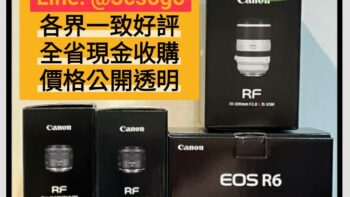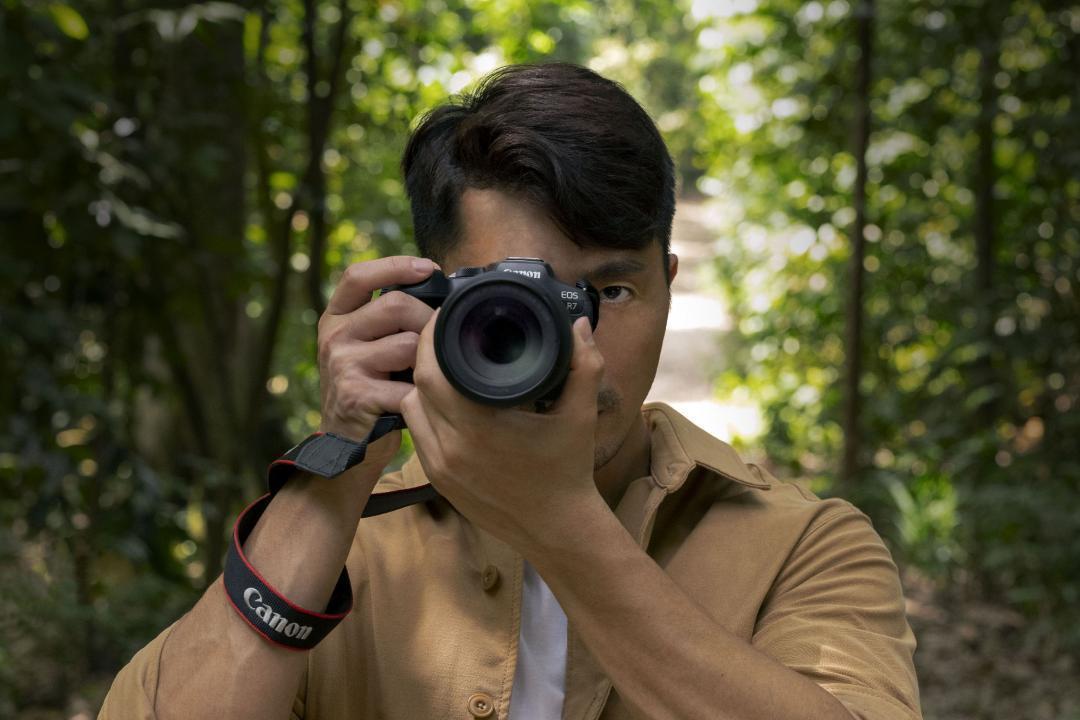高價 canon鏡頭收購 請立即與我們聯絡 收購canonRF系列,RF定焦,RF廣角,RF旅遊,收購EF-M系列,收購大三元,小三元,收購L鏡,收購Marco,二手鏡頭,全新鏡頭,鏡頭買賣,鏡頭收購 Read More ...

收購相機及鏡頭 您用不到相機鏡頭 不論新舊,都可以換現金 陪您走過每個黃金歲月的年頭,現在因為家庭或工作總總因素,這些可愛的相機及鏡頭寶貝們,除了躺在倉庫,安靜在防潮箱等候主人帶它們出勤之外,應該可以有個兩全其美的辦法"就是讓給有緣人",讓它再度發揮存在地球上的價值吧!

高價 canon鏡頭收購 請立即與我們聯絡 收購canonRF系列,RF定焦,RF廣角,RF旅遊,收購EF-M系列,收購大三元,小三元,收購L鏡,收購Marco,二手鏡頭,全新鏡頭,鏡頭買賣,鏡頭收購 Read More ...

線上估價 我們是專業的3C收購,高價收購您不用的3C產品,價格好不怕您比較!! 我們專業經營各項3C高價回收,清運協助,可開立單據,多通路多管道,非坊間垃圾回收價,價格不怕您比較,歡迎企業戶汰舊換新, Read More ...

sigma鏡頭收購,canon 鏡頭收購,二手鏡頭收購,全新鏡頭收購,收購nikon鏡頭,收購sony鏡頭,收購leica鏡頭,收購fujifilm鏡頭,收購panasonic鏡頭,收購zeiss鏡頭 Read More ...

高價 nikon鏡頭收購 請立即與我們聯絡 收購nikone鏡頭,收購nikon z,收購nikon z 40mm,z 50mm,z 35mm,z 20mm,z 24mm,z 28mm,收購af-s Read More ...

SONY鏡頭收購 全新SONY鏡頭收購 E-Mount鏡頭,FE 24-70MM,VCL-ECU2,FE 24-105MM,E PZ 18-105MM,FE 16-35MM,FE 35MM FE 70 Read More ...

PENTAX 鏡頭收購 標準定焦 (35-50) 廣角定焦 (21-31) 望遠定焦 (118-200) 中望遠定焦 (55-100) 超望遠定焦 (236-560) 廣角變焦 (20-82.5) 超 Read More ...
sigma鏡頭收購
Two years ago at CP+, sigma鏡頭收購sigma unveiled the DP Quattro, a series of cameras with fixed lenses, APS-C sensors and a truly unique body design. This year, the company is using Japan’s biggest camera show to introduce the SD Quattro, a pair of mirrorless cameras with sigma鏡頭收購sigma’s own lens mount, unusual sensors, and — yes — another far-out body design.
Both SD Quattro cameras use sigma鏡頭收購sigma’s Foveon layered sensor technology, which is known for its high resolution, excellent color reproduction, and comparatively poor low light performance. The regular SD Quattro uses an APS-C sensor, but the higher-end SD Quattro H has an APS-H sensor, an uncommon size that sits somewhere between APS-C and full-frame and gives a 1.3x crop factor.
Both cameras also share pretty wild industrial design. The SD isn’t as futuristic as the DP, but there are some very unconventional decisions here. The grip is much shorter than the rest of the body, which balloons downward to accomodate a huge lens mount. The electronic viewfinder is situated toward the right of the camera’s rear, rather than the traditional center or left position. The display seems to be an ultra-wide panel that’s sectioned off at one end, giving the impression of a secondary always-on screen that shows exposure information in monochrome.

How does it all work out? Well, the SD cameras are at least more ergonomic than the DPs, with a far more comfortable grip. The screen certainly looks cool, too, and is a neat way to display important information without clutter. The viewfinder, though, is not a great idea — although it juts out a fair bit, I found myself slightly turning to the left to get my nose out of the way, and it just felt odd to have the camera across my face like that. Left-eyed shooters might be overjoyed, though.
There’s nothing about the SD Quattros that’ll make them any less niche than sigma鏡頭收購sigma cameras have been before. Performance seems to be as slow as ever, and you really have to have specific reasons to want the Foveon sensor. Few photographers are going to want to buy into sigma鏡頭收購sigma’s own lens mount, and it’s unclear exactly how much of the company’s lineup will cover an APS-H sensor.
sigma鏡頭收購sigma knows all of this, of course, and is happy to serve a smaller number of customers; the company’s innovation with its own cameras acts as a halo for products that more people are likely to buy, like its lenses for Canon and Nikon mounts. And really, experimentation in the staid world of camera design should always be welcomed. Pricing and a release date for the SD Quattro are yet to be confirmed.

sigma鏡頭收購sigma is also showing off two new lenses at CP+. This is the 50-100mm f/1.8, a zoom for APS-C DSLRs. Constant f/1.8 aperture is unprecedented in a lens of this focal length range, just as it was when sigma鏡頭收購sigma introduced the 18-35mm f/1.8 a few years back. Although both are pretty bulky, the lenses would make a good pair for shooters who want strong low-light performance and depth of field control without making the jump to full-frame. The 50-100mm will be out in April for $1,099.

sigma鏡頭收購sigma’s second new lens of the show is this 30mm f/1.4 prime for mirrorless cameras. sigma鏡頭收購sigma has sold a well-regarded DSLR lens with similar specs for a long time, and this version should be a solid, versatile option for Micro Four Thirds and Sony NEX shooters. It ships next month for $339.

1/4
 (圖/Canon提供)
(圖/Canon提供)
相較於 Sony、Nikon 近年均有開放第三方副廠鏡頭,Canon RF 步調相對緩慢,用戶多半只能以原廠鏡頭為主。今日終於迎來好消息!知名鏡頭品牌 sigma鏡頭收購sigma、Tamron 正式宣布開發 RF 鏡頭,未來 Canon 用戶將有一批新鏡頭可以選購。
sigma鏡頭收購sigma 今日正式宣佈,即將推出多款 Canon RF 卡口的鏡頭,首批以 APS-C 規格為主,預計最快在七月推出 18-50mm F2.8 DC DN 標準變焦鏡,在 2024 年秋季以後,相繼還會推出 10-18mm F2.8 DC DN,以及四種不同焦距的定焦鏡 16/23/30/56mm F1.4 DC DN。
至於 Tamron 則是公開旗下首款 RF 鏡頭 11-20mm F/2.8 Di III-A RXD (Model B060),主打輕便性、超廣角、大光圈等特性,同樣聚焦在 APS-C 鏡頭,預計在 2024 年正式上市,至於其他鏡頭規劃則未透露。
事實上綜觀 Canon 的產品線,APS-C 鏡頭數量是最薄弱的一環,僅有 4 顆鏡頭,僅管可以與全片幅共用,卻無法發揮最佳表現,而且也更加沈重。隨著 sigma鏡頭收購sigma、Tamron 等副廠鏡頭群加入,將能使 Canon 的 APS-C 相機更具有吸引力。
sigma鏡頭收購 sigma鏡頭收購